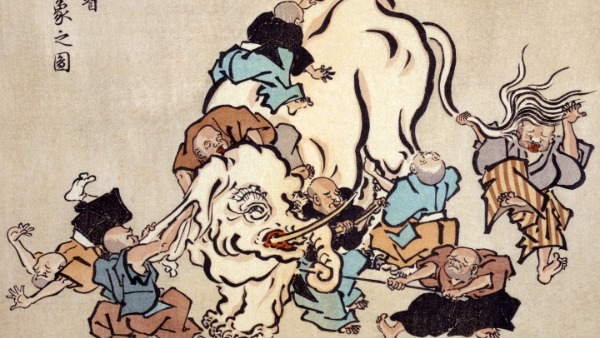
A story in last week’s New Yorker captures the essential problem of health science — and the problems inherent in writing about genetically modified food — better than anything else I’ve seen. Writer Elif Batuman followed the scientists trying to figure out the cause of a fatal kidney disease in the Balkans. It’s called Balkan endemic nephropathy, or BEN. (The story is paywalled, but it’s worth a trip to the library if you’re not a subscriber. Batuman has a gift for catching the telling detail, and an appreciation for the absurd.)
There are lots of theories about the causes of BEN: It shows up only in certain towns across the region, in a pattern that “closely shadows the locations of Pliocene-era coal deposits.” But no one has suggested a mechanism by which the coal might cause the disease. Researchers do, on the other hand, have a mechanism showing how the plant European birthwort could be causing kidney damage; but the stuff grows all over the region, not just in the villages afflicted with BEN. There are other possibilities, and each hypothesis has its partisans. In describing the situation, Batuman’s father, one of the researchers working on BEN, refers to a well-known parable (this one) that I think of often when trying to sort out medical mysteries:
the story of the blind men and the elephant: everyone noticed something different and built a theory around it, and nobody saw the whole picture. Data from one village, or the expertise of one specialist, or the aftereffects of one environmental trauma, would indicate a solution, only to crumble in light of other data. Virologists, studying a village where all the BEN patients had hidden in an oak forest during the Second World War, attributed the disease to a virus native to oak forests.
And on and on. Muslims in Kosovo are less susceptible, which led to hypotheses: Something to do with pork? But then Muslims in Bulgaria do get BEN, though the Bulgarian Gypsies don’t. As I read, I was aware of a strong tidal pull toward some ideas, and skepticism toward others. My bias appears pretty haphazard: I’m drawn to the best story.
Whether we’re trying to figure out what to do to prevent BEN, or just to live a little longer, we’re all trying to connect cause and effect. In a way, we’re all amateur health scientists, doing our best to develop hypotheses about what to fear. As creatures that must eat to survive, we’ve evolved a hair-trigger suspicion of potential poisons lurking in our foods. Unlike rats, with their highly refined sense of smell and taste, humans are pretty bad at sensing dangerous chemicals. Instead, humans (the social animal) avoid danger by watching each other, and by telling stories.
Telling stories has worked well in some ways: Hunter-gatherers, for example, tend to have an exquisite knowledge of poisonous plants, passed down through stories. But stories also cause confusion, as Batuman illustrates with the case of BEN. It’s all too easy to draw the line of causality between disease and something that’s already bothering you, be it vaccines, pesticides, your neighbor’s cows, or the military industrial complex.
The challenge is to look at the whole picture and ask: Of all the dangers out there, which should we fear? Of all the potential causes of this illness, which are most plausible?
Looking at the whole picture is almost impossible if the different groups examining a problem — or an elephant — are separated by hard barriers, be they ideological, geographic, or bureaucratic. In the case of BEN, all of the above seem to apply.
After the war, political power was decentralized in order to preserve equilibrium among different ethnic groups. As a result, Bosnia-Herzegovina now has no fewer than thirteen Ministries of Health … “Balkanize,” defined by the O.E.D. as “to divide (a region) into a number of smaller and often mutually hostile units, as was done in the Balkan Peninsula in the late nineteenth and early twentieth centuries.”
And as science progresses it tends to balkanize:
It’s an apt word to describe the study of Balkan nephropathy and its fragmentation along geopolitical, ethnic, religious, linguistic, and even disciplinary lines. Researching the disease requires expertise in a wide range of fields — nephrology, epidemiology, genetics, oncology, microbiology, hydrogeology, botany, toxicology, biochemistry — each of which can be as hermetic and insular as a tiny country, with its own language, customs and sovereignty.
Try to understand the connections between food and health, and you put yourself in the center of an intensely interdisciplinary mosh pit. In researching GM food, I’ve come to see how balkanized the people working on this issue are. Those familiar with the science basically agree on the evidence, they are just exasperated by one another’s values and customs. As I work my way around this elephant I find myself in the company of one different faction after another, each gifted with its own insights but each beset by its own kind of blindness.
Batuman ends her story with an image of cornstalks:
As we drove past, there was one magical moment when they arranged themselves into rows and it was possible to see clearly all the way to the end, before they dissolved back into disorder.
I don’t expect I’ll find some solution to the problem, one way of looking at things that makes all the facts line up. I’m just hoping to get a feel for the elephant.
More in this series:
- The genetically modified food debate: Where do we begin?
- The GM safety dance: What’s rule and what’s real
- Genetic engineering vs. natural breeding: What’s the difference?
- Is nature a cradle or a battlefield?
- Genetically engineered food: Allergic to regulations?
- Genetically modified seed research: What’s locked and what isn’t
- Genetically modified literature (in which I read books so you don’t have to)
- Is extremism in defense of GM food a vice?



